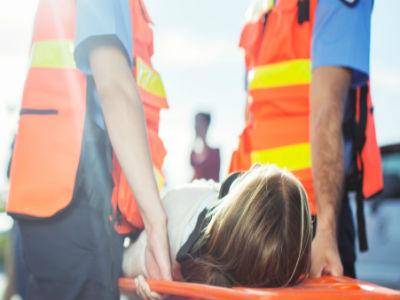Not that the heart gives a choice, but had it been considerate enough to do so, the safest place to have a cardiac arrest, outside of a hospital, would surely be the Mumbai airport.

(Photo Courtesy: Getty Images)
Not that the heart gives a choice, but had it been considerate enough to do so, the safest place to have a cardiac arrest, outside of a hospital, would surely be the Mumbai airport.
The domestic and the integrated terminal 2 have a total of 106 automatic electronic defibrillators (AED) installed in well-marked locations for quick access in areas such as the terminal halls, departure gates, baggage retrieval sections, passenger coaches, interterminal coaches and even the toilets and elevators. It’s the largest number of AEDs installed at any airport in India. And the defibrillators are used more often than one would think.
Last year, the Mumbai airport medical team handled an average of 45 cases a day, with a majority being heart attacks and cardiac arrests.
Between 2010 and March 2016, over 200 million passengers passed through the Mumbai airport. In these five years, it handled more than 85,000 medical cases.
Despite the Delhi airport handling a larger passenger traffic, Mumbai faces the largest number of medical emergencies. There are a number of reasons for the high number of medical cases reported here, says an airport official. For one, it is a popular entry point for medical tourists. Then again, Mumbai has the Tata Memorial hospital, which attracts cancer patients from across the country . And lastly , the steady rise in the number of senior citizens who board international flights, especially the 15-16-hour ultra-long haul, non-stop flights from Mumbai to Newark.
“Out of 85,000 cases handled in the past 5 years, 1,814 were serious medical cases, largely cardiovascular emergencies, where patients were shifted to hospital by the airport team,” said a Mumbai International Airport Pvt Ltd (MIAL) official.
That’s where the defibrillator programme comes in. It follows the international gold standard, the “3-minute drop to shock” rule. That is, within 180 seconds of a passenger dropping or collapsing following a heart attack or cardiac arrest, he/she should start receiving the defibrillation shock. “The large number of AEDs ensures that at any point during a passenger’s journey through the airport, a defibrillator can be retrieved and used in less than 3 minutes,” said a senior doctor with MIAL’s medical team.
Besides, given the location of Mumbai, there is the occasional detour by international aircraft overflying India in case of a medical emergency . A fortnight ago, an Emirates A380 flying from Dubai to Brisbane landed in Mumbai after a 73-year old Australian passenger suffered a cardiac arrest on board.
Apart from the serious cardiac emergencies, the other medical cases handled involve senior citizens who disembark from long-haul flights with symptoms of deep vein thrombosis that sets in if one sits for hours in cramped airline seats, people whose blood pressure shoots up, asthma attacks, cargo handlers who get injured, airline crew, staff who collapse from fatigue.
And then there are cases like children who run on to conveyor belts or elevators and get injured. Every once in a while comes an unusual case. Like last August, when a young Saudi transit passenger waiting to board a flight to Riyadh went into labour and delivered a boy in the airport’s washroom. That rare birth apart, mostly the serious medical emergencies at the airport are about fighting death.
source: http://www.health.economictimes.indiatimes.com / ETHealthworld.com / Home> Industry / by Manju V. / TNN / June 02nd, 2016

